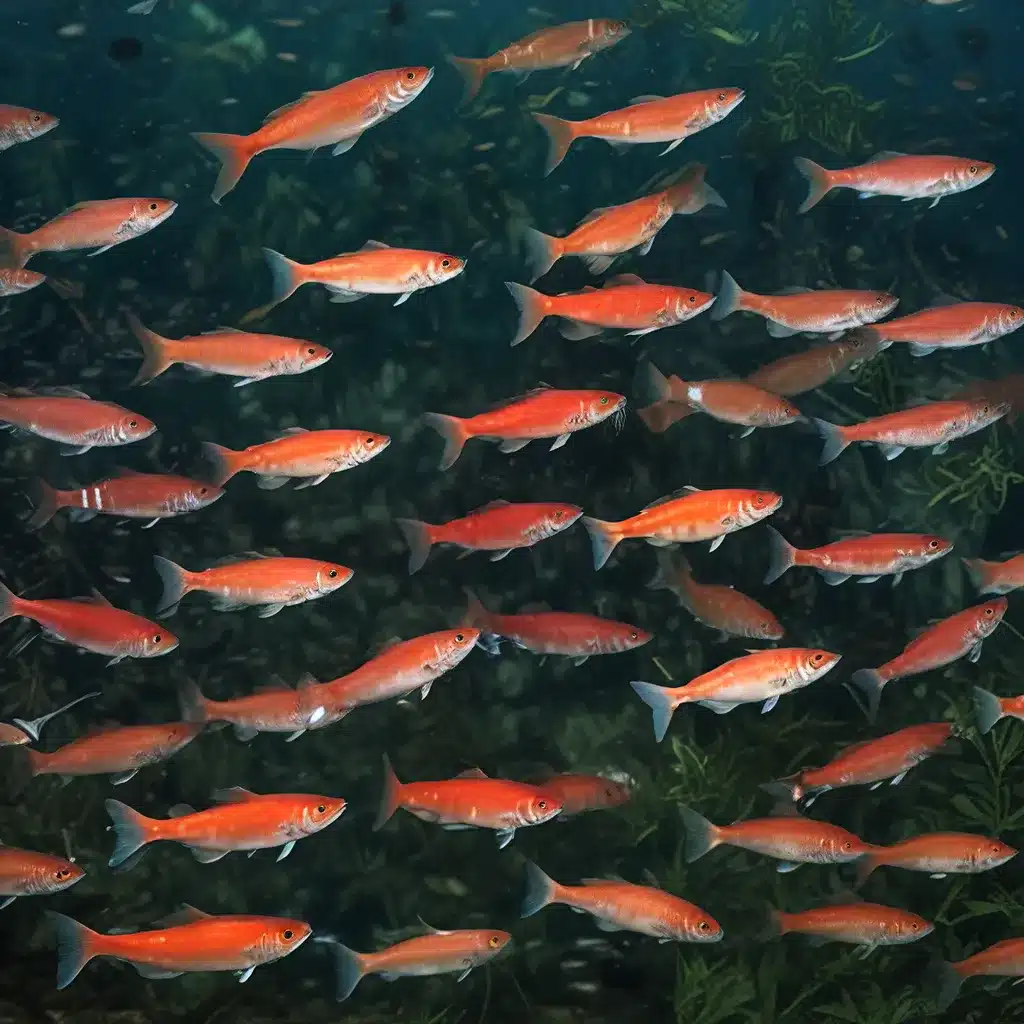
Unraveling the Evolutionary Adaptations of Fish Respiratory Pigments
Hemoglobin, the essential oxygen-carrying protein found in the blood of vertebrates, plays a crucial role in the survival and diversification of teleost fishes. As ectotherms that rely on water-breathing, teleosts have evolved an impressive repertoire of hemoglobin genes to thrive in their ever-changing aquatic environments.
Through comparative genomics, researchers have uncovered the dynamic evolution of hemoglobin subunit genes across 24 vertebrate species, including 16 teleosts. The findings reveal that teleost genomes can contain between 5 to 43 hemoglobin genes, representing the largest hemoglobin gene repertoire among all vertebrates. This genetic diversity likely stems from the teleost-specific whole-genome duplication event, as well as subsequent tandem gene duplications and genome rearrangements.
Recent studies suggest that the ancestor of teleost fishes had at least four hemoglobin alpha (Hbα) and three to four hemoglobin beta (Hbβ) subunit genes. Over evolutionary time, these ancestral copies diversified through various mechanisms, leading to the remarkable hemoglobin gene diversity observed across teleost lineages today.
Adaptive Radiation and the Hemoglobin Advantage
One of the most species-rich families of vertebrates, the cichlid fishes, serve as a prime example of how hemoglobin genes have contributed to adaptive radiation and diversification. Cichlids are known for their large and rapid adaptive radiations, especially in the tropical lakes of Africa, where they have colonized a wide range of ecological niches.
Interestingly, many of these African cichlid lakes are characterized by steep oxygen gradients, with deep waters often exhibiting low oxygen concentrations. Yet, cichlids have repeatedly adapted to these challenging hypoxic environments, in part through the expansion and diversification of their hemoglobin gene repertoire.
Studies on cichlids from Lake Malawi and Lake Barombi Mbo have revealed that deep-water adapted species possess highly elevated blood hemoglobin concentrations and show signs of parallel adaptation in specific hemoglobin genes. This adaptive potential is likely facilitated by the increased number of hemoglobin genes found in cichlid genomes, ranging from 18 to 31 copies across the species examined.
Unraveling the Genomic Architecture of Hemoglobin Clusters
The remarkable hemoglobin gene diversity observed in teleosts is not only a result of whole-genome duplication, but also the dynamic process of tandem gene duplications, genome compaction, and rearrangements. Teleost fishes generally possess two distinct hemoglobin gene clusters, known as the LA and MN clusters, each with a unique genomic organization and evolutionary history.
The LA cluster is more conserved, typically containing three hemoglobin genes in the same orientation, flanked by the lcmt1 and aqp8 genes. In contrast, the MN cluster is more variable, ranging from 15 to 29 hemoglobin subunit genes in the cichlid species examined. This cluster is flanked by the rhbdf1, mpg, and nprl3 genes, and shows evidence of extensive gene duplications and rearrangements.
Interestingly, the cichlid species studied exhibit differences in the composition and organization of the MN cluster, suggesting ongoing genome evolution and species-specific adaptations. For example, the Nile tilapia (Oreochromis niloticus) has the highest number of hemoglobin genes (29) among the cichlids, while the Neotropical Midas cichlid (Amphilophus citrinellus) has the lowest (15).
Positive Selection and Functional Diversification
The expansion and diversification of hemoglobin genes in teleosts have been accompanied by strong signatures of positive selection, particularly in the cichlid lineage. Comprehensive analyses of hemoglobin subunit genes revealed that many sites within the Hbα and Hbβ genes are under diversifying selection, indicating functional specialization.
Interestingly, most of the positively selected sites are located on the surface of the hemoglobin tetramer, suggesting that these substitutions may affect subunit interactions, oxygen-binding affinities, and overall functionality. This pattern of diversifying selection is particularly pronounced in the recently duplicated hemoglobin genes, hinting at the ongoing process of sub-functionalization and adaptation to diverse aquatic environments.
Hemoglobin and the Depth Gradient Conundrum
The evolution of the hemoglobin gene repertoire in teleosts appears to be closely linked to the depth range occupied by different species. A study on the Gadiformes (cod) lineage revealed a negative correlation between the number of hemoglobin genes and the maximum depth of a species’ habitat. Species living in shallower, epipelagic regions tend to have a greater number of hemoglobin genes compared to their deep-sea counterparts.
This pattern suggests that a broader hemoglobin gene repertoire may be advantageous for teleosts inhabiting more variable environments, as it allows for the fine-tuning of oxygen transport properties to cope with fluctuations in temperature, pressure, and oxygen availability. In contrast, deep-sea species may not require such a diverse hemoglobin gene set, as their environment is relatively stable in terms of these abiotic factors.
The adaptive significance of hemoglobin multiplicity in teleosts remains an intriguing area of research, with studies on other fish lineages, such as the triplefin fishes and goldfish, providing further insights into the relationship between hemoglobin diversity and environmental adaptation.
Conclusion: Embracing the Aquatic Respiratory Frontier
The extraordinary genetic diversity of hemoglobin genes in teleost fishes is a testament to their remarkable evolutionary adaptability. By uncovering the dynamic history of hemoglobin gene evolution, researchers have gained valuable insights into the genetic mechanisms underlying the successful diversification of teleosts, particularly in the face of challenging aquatic environments.
As aquarium enthusiasts, understanding the adaptive significance of hemoglobin can inform our approaches to aquarium management and aquascaping. By considering the unique respiratory needs of different fish species, we can create thriving aquatic ecosystems that support the full breadth of teleost diversity. Embracing the genetic complexity of hemoglobin can inspire us to become better stewards of the aquatic frontier, ensuring the long-term health and resilience of our cherished aquarium inhabitants.

